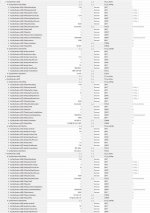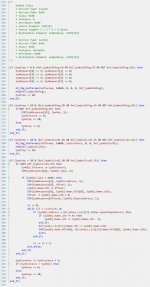tlf30
Lifetime Supporting Member
Hello,
I was wondering if someone can help me solve how to use a MSG instruction to get the data and fault information from an ControlLogix I/O module.
I am interested in sending the message from one controller to the I/O module of another controller to periodically get the fault bits from the I/O module, and ideally the data bits. For now let's just focus on the 1756-IB16 for simplicity. If I can just grab the entire input data structure, and parse it myself, that would be fine (actually ideal).
I looked in the EDS file, I see that the connection paths are:
"20 04 24 10 2C C5 2C 83" for time stamped data
"20 04 24 10 2C C5 2C 83" for standard input data
But I am not sure how to use this information to configure the MSG instruction to pull the data.
If someone could guide me through how to get the MSG parameters, so I could extract them for this module and others, I would really appreciate it.
Thank you,
Trevor
I was wondering if someone can help me solve how to use a MSG instruction to get the data and fault information from an ControlLogix I/O module.
I am interested in sending the message from one controller to the I/O module of another controller to periodically get the fault bits from the I/O module, and ideally the data bits. For now let's just focus on the 1756-IB16 for simplicity. If I can just grab the entire input data structure, and parse it myself, that would be fine (actually ideal).
I looked in the EDS file, I see that the connection paths are:
"20 04 24 10 2C C5 2C 83" for time stamped data
"20 04 24 10 2C C5 2C 83" for standard input data
But I am not sure how to use this information to configure the MSG instruction to pull the data.
If someone could guide me through how to get the MSG parameters, so I could extract them for this module and others, I would really appreciate it.
Thank you,
Trevor




